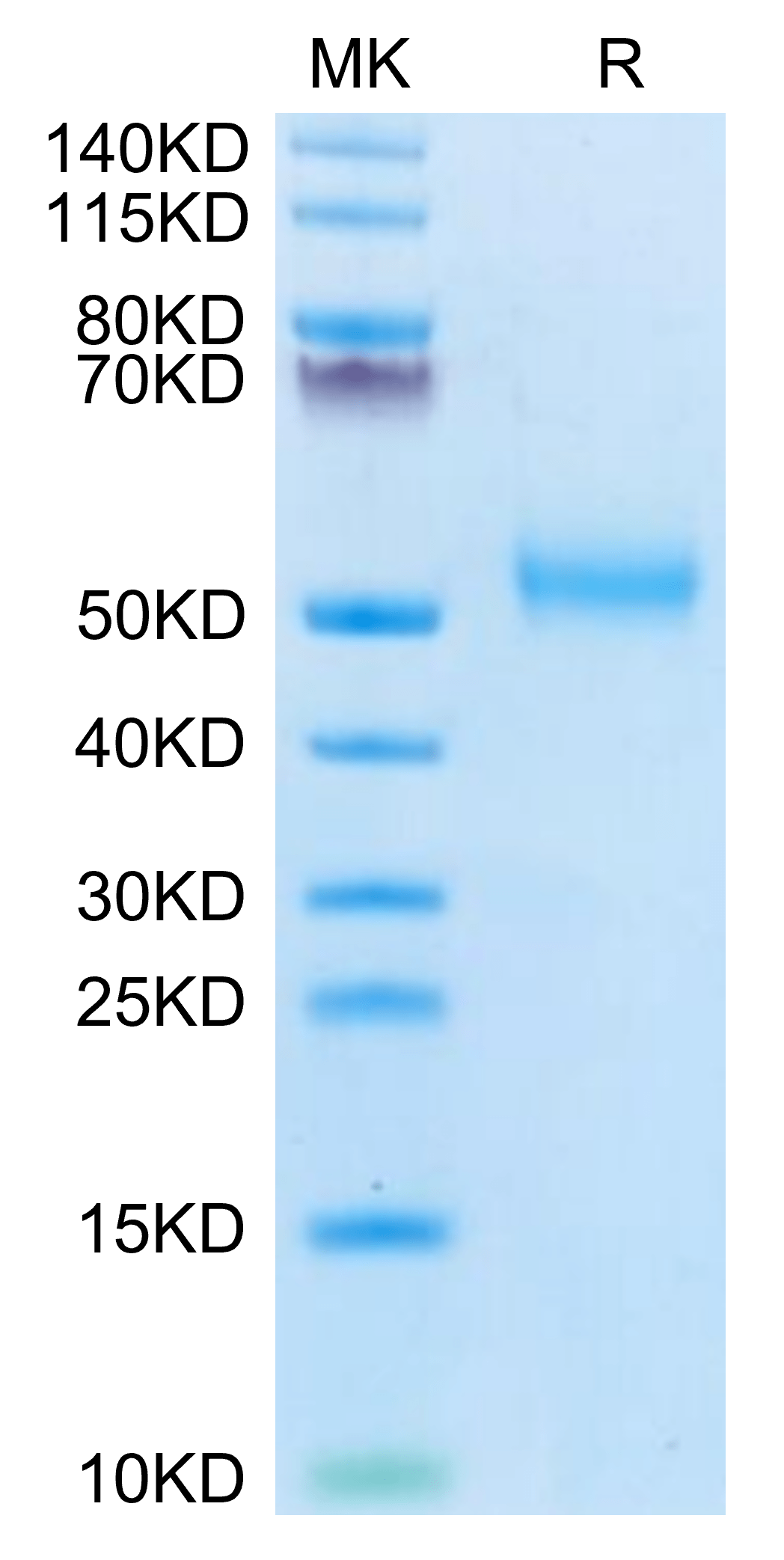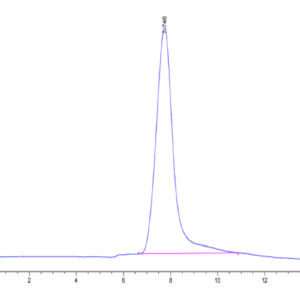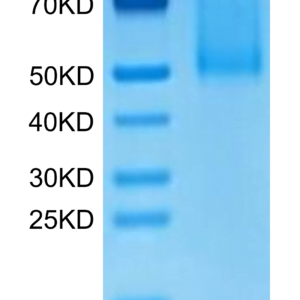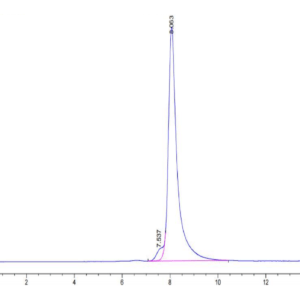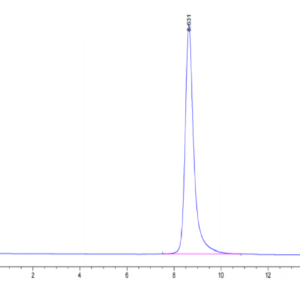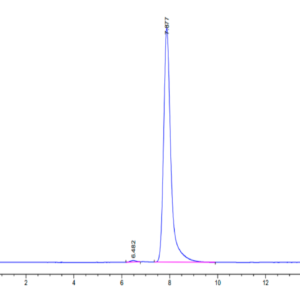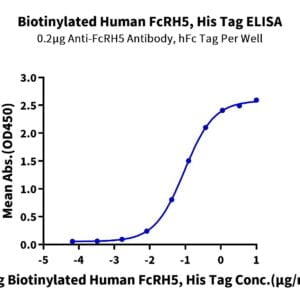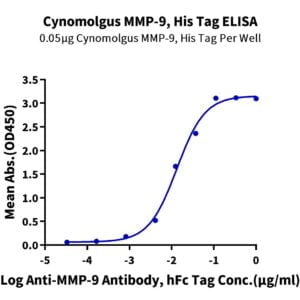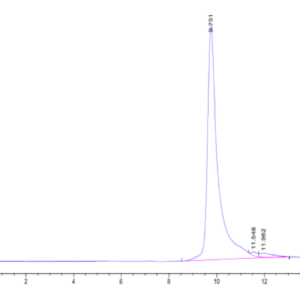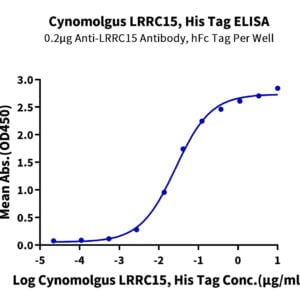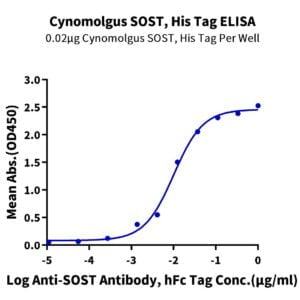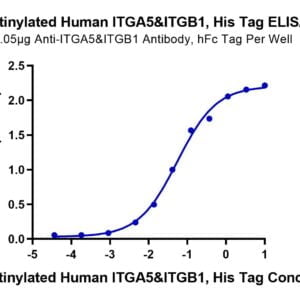| Weight | 1 lbs |
|---|---|
| Dimensions | 9 × 5 × 2 in |
| accession | Q6DN72 |
| express system | HEK293 |
| product tag | N-His |
| purity | > 95% as determined by Tris-Bis PAGE |
| background | Fc receptor-like 6 (FCRL6), the most recently characterized member of the FCRL family, is a cell surface glycoprotein with tyrosine-based regulatory potential. An extensive survey of human hematopoietic tissues disclosed that FCRL6 expression by NK- and T-cell subpopulations increases as a function of differentiation and is remarkably restricted to mature lymphocytes with cytotoxic capability. |
| molecular weight | The protein has a predicted MW of 32.8 kDa. Due to glycosylation, the protein migrates to 50-60 kDa based on Tris-Bis PAGE result. |
| available size | 100 µg, 500 µg |
| endotoxin | Less than 1EU per μg by the LAL method. |
Human FcRH6/FCRL6 Protein 3320
$300.00 – $1,000.00
Summary
- Expression: HEK293
- Pure: Yes (SDS-PAGE)
- Amino Acid Range: Leu20-Trp307
Human FcRH6/FCRL6 Protein 3320
| protein |
|---|
| Size and concentration 100, 500µg and lyophilized |
| Form Lyophilized |
| Storage Instructions Valid for 12 months from date of receipt when stored at -80°C. Recommend to aliquot the protein into smaller quantities for optimal storage. Please minimize freeze-thaw cycles. |
| Storage buffer Shipped at ambient temperature. |
| Purity > 95% as determined by Tris-Bis PAGE |
| target relevance |
|---|
| Fc receptor-like 6 (FCRL6), the most recently characterized member of the FCRL family, is a cell surface glycoprotein with tyrosine-based regulatory potential. An extensive survey of human hematopoietic tissues disclosed that FCRL6 expression by NK- and T-cell subpopulations increases as a function of differentiation and is remarkably restricted to mature lymphocytes with cytotoxic capability. |
| Protein names Fc receptor-like protein 6 (FcR-like protein 6) (FcRL6) (Fc receptor homolog 6) (FcRH6) (IFGP6) |
| Gene names FCRL6,FCRL6 FCRH6 |
| Mass 9606Da |
| Function Acts as a MHC class II receptor (PubMed:20519654). When stimulated on its own, does not play a role in cytokine production or the release of cytotoxic granules by NK cells and cytotoxic CD8(+) T cells (PubMed:17213291, PubMed:18991291). Does not act as an Fc receptor (PubMed:18991291). |
| Catalytic activity #N/A |
| Subellular location Cell membrane ; Single-pass type I membrane protein . |
| Tissues Expressed by cytolytic cells including NK cells, effector and effector-memory CD8(+) T-cells, and a subset of NKT cells (at protein level) (PubMed:17213291, PubMed:18991291, PubMed:20933011). Also expressed in gamma delta T cells and in a rare subset of effector CD4(+) T-cells (at protein level) (PubMed:18991291). Expressed in spleen, skin, peripheral blood leukocytes, liver, lung, bone marrow, small intestine and placenta (PubMed:20933011). Expression among T-cells is greatly expanded in HIV-1 infected individuals, and includes not only effector and effector-memory CD8(+) T-cells but also populations of CD4(+) T-cells (PubMed:17213291, PubMed:20933011). Expression among CD8(+) T-cells and NK cells is expanded in individuals with chronic lymphocytic leukemia (CLL) but is reduced in PBMCs from patients with acute (AML), chronic myeloid leukemia (CML) and non-Hodgkin's lymphoma (PubMed:18991291, PubMed:20933011). Expression is higher in PBMCs and/or CD3(+) cells of patients with autoimmune diseases, such as rheumatoid arthritis (RA), systemic lupus erythematosus (SLE) and idiopathic thrombocytopenia purpura (ITP) (PubMed:20933011). In contrast, expression in CD3(+) cells from patients with lupus anticoagulans (LA) is higher (PubMed:20933011). |
| Structure Interacts (tyrosine phosphorylated) with PTPN11 (PubMed:17213291, PubMed:20933011). Interacts (tyrosine phosphorylated) with PTPN6, INPP5D, INPPL1 and GRB2 (PubMed:20933011). Interacts with class II MHC HLA-DR when the alpha chain is associated with a beta-1, beta-4 or a beta-5 but not a beta-3 chain (PubMed:20519654). |
| Post-translational modification Phosphorylated on Tyr residues. Tyrosine phosphorylation induces association with phosphatase PTPN11, PTPN6, INPP5D, INPPL1 and GRB2. |
| Domain Co |
| Target Relevance information above includes information from UniProt accession: Q6DN72 |
| The UniProt Consortium |
Publications
Publications
| pmid | title | authors | citation |
|---|---|---|---|
| We haven't added any publications to our database yet. | |||
Protocols
| relevant to this product |
|---|
Documents
| # | ||
|---|---|---|
| Please enter your product and batch number here to retrieve product datasheet, SDS, and QC information. | ||
